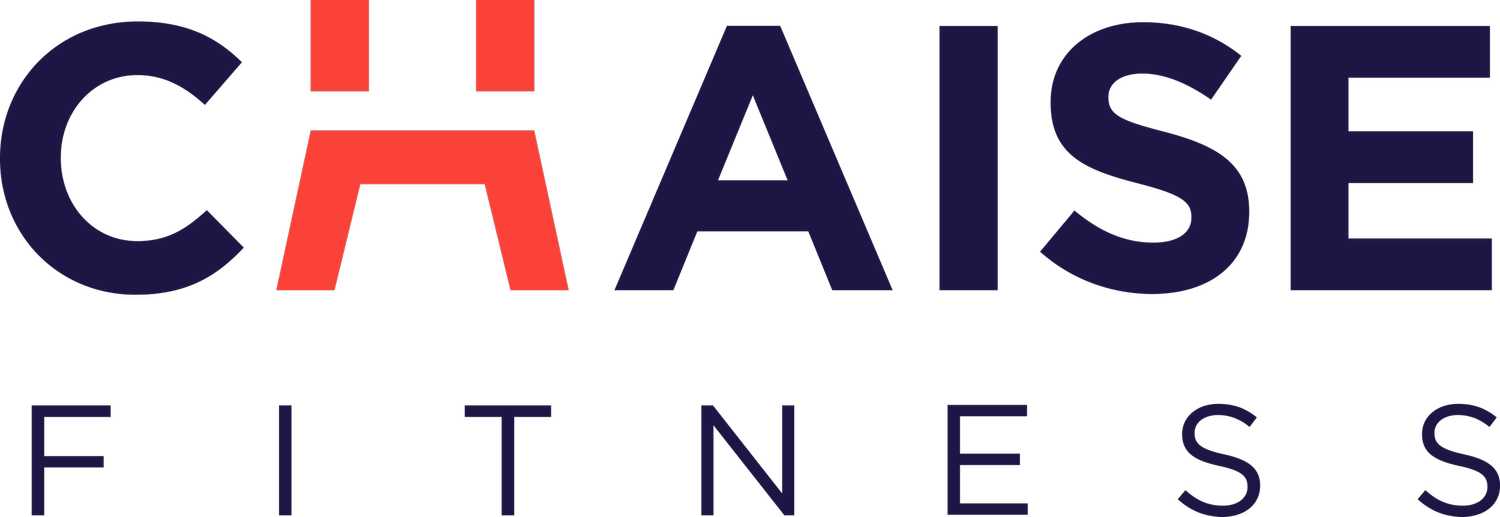The Top Pilates Mistakes Beginners Make and How to Fix Them
Pilates is one of the most effective forms of movement for improving strength, flexibility, posture, and overall body awareness. At ChaiseFitness, we’ve seen how life-changing Pilates can be for people of all ages and fitness levels. But like any workout method, beginners often fall into common traps that keep them from experiencing the full benefits.
If you’re new to Pilates, don’t worry—mistakes are part of the learning process. The key is knowing how to identify and correct them. Let’s break down the most common beginner mistakes and how you can fix them to get the most out of every class.
Mistake #1: Holding Your Breath
The problem:
A lot of beginners forget to breathe, especially when concentrating on new movements. Holding your breath creates tension in the body, reduces oxygen flow, and limits your ability to move fluidly.
How to fix it:
Focus on Pilates’ signature breathing technique—inhaling through the nose and exhaling through the mouth. Breathe into your ribcage rather than your belly. At ChaiseFitness, our instructors cue breath patterns throughout class to help you coordinate movement with breath. With practice, this becomes second nature.
Mistake #2: Overworking the Neck and Shoulders
The problem:
When doing core exercises like the Pilates Hundred or roll-ups, beginners often strain their neck or hunch their shoulders. This not only creates discomfort but also shifts the focus away from the core, which is where the work should be happening.
How to fix it:
Keep your shoulders relaxed and draw them down away from your ears. If your neck feels tense, lower your head back down to the mat and focus on engaging your abs. Using props like a small pillow or towel under the head can also help until your core gets stronger.
Mistake #3: Rushing Through Movements
The problem:
Pilates is not about how fast you can move—it’s about control and precision. Beginners sometimes rush through exercises, thinking more reps mean better results. In reality, speed often leads to sloppy form and missed muscle engagement.
How to fix it:
Slow down. Concentrate on the quality of each movement, not the quantity. At ChaiseFitness, we encourage mindful movement where every rep counts. Moving with control will strengthen your stabilizing muscles and protect you from injury.
Mistake #4: Forgetting About Alignment
The problem:
It’s easy to lose track of posture during a workout, especially when trying to follow along with new exercises. Misalignment—like overarching your back or letting your knees fall inward—prevents you from working the right muscles and can strain joints.
How to fix it:
Think about stacking your body: shoulders over hips, hips over knees, and so on. Keep your pelvis neutral and engage your core throughout. Our ChaiseFitness instructors give real-time corrections, but you can also check yourself in the mirror or imagine a string pulling you tall from the crown of your head.
Mistake #5: Not Engaging the Core Properly
The problem:
The core is the foundation of Pilates. Many beginners mistakenly think “engaging the core” means sucking in the stomach or bracing tightly. In reality, the core includes the deeper stabilizing muscles—not just your abs.
How to fix it:
Practice drawing your navel gently toward your spine without holding your breath. Focus on lifting and lengthening rather than clenching. Over time, you’ll build strength in your deep abdominals, back, and pelvic floor, creating stability and support for every exercise.
Mistake #6: Ignoring Modifications
The problem:
Some beginners feel pressured to keep up with advanced movements even if their body isn’t ready. This can lead to poor form, frustration, or even injury.
How to fix it:
Listen to your body. Modifications aren’t a sign of weakness—they’re a smart way to build strength safely. At ChaiseFitness, we encourage clients to use props, adjust ranges of motion, or take breaks when needed. Over time, your body will naturally progress to more challenging variations.
Mistake #7: Skipping Consistency
The problem:
Many beginners expect instant results after one or two classes. When that doesn’t happen, they lose motivation and stop showing up consistently. Pilates is about steady, long-term progress, not quick fixes.
How to fix it:
Commit to a regular schedule—two to three times per week is ideal. Even short, consistent sessions build strength, flexibility, and confidence over time. Remember, Joseph Pilates himself said, “In 10 sessions you’ll feel the difference, in 20 you’ll see the difference, and in 30 you’ll have a whole new body.”
Mistake #8: Treating Pilates Like Just Another Workout
The problem:
Beginners sometimes approach Pilates like a bootcamp, focusing only on burning calories or sweating as much as possible. This mindset misses the deeper benefits of Pilates, such as improved posture, reduced stress, and better movement quality.
How to fix it:
Think of Pilates as a practice for both body and mind. Pay attention to how your body feels, your alignment, and your breathing. At ChaiseFitness, our method blends Pilates principles with strength and cardio, giving you a full-body workout that builds long-lasting results.
Bringing It All Together
Every Pilates beginner makes mistakes—that’s part of the journey. The good news is that with awareness and the right guidance, you can quickly correct them and unlock the full benefits of the practice. At ChaiseFitness, our experienced instructors are here to help you refine your technique, move safely, and enjoy the process.
Whether you’re looking to strengthen your core, improve posture, or simply move with more confidence, avoiding these common pitfalls will keep you on track. So breathe, align, move with control, and show up consistently. Your Pilates practice will only get better from here.
Ready to start your Pilates journey?
Join us at ChaiseFitness for classes designed to empower, challenge, and support you—whether you’re a complete beginner or an experienced mover.

